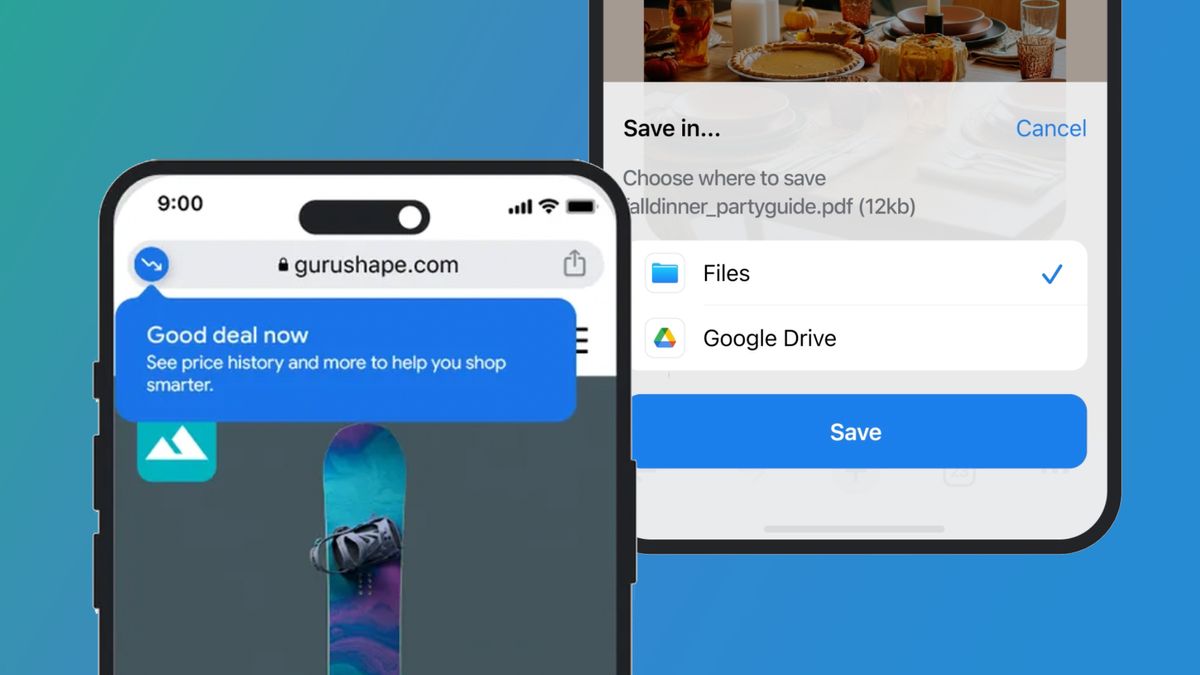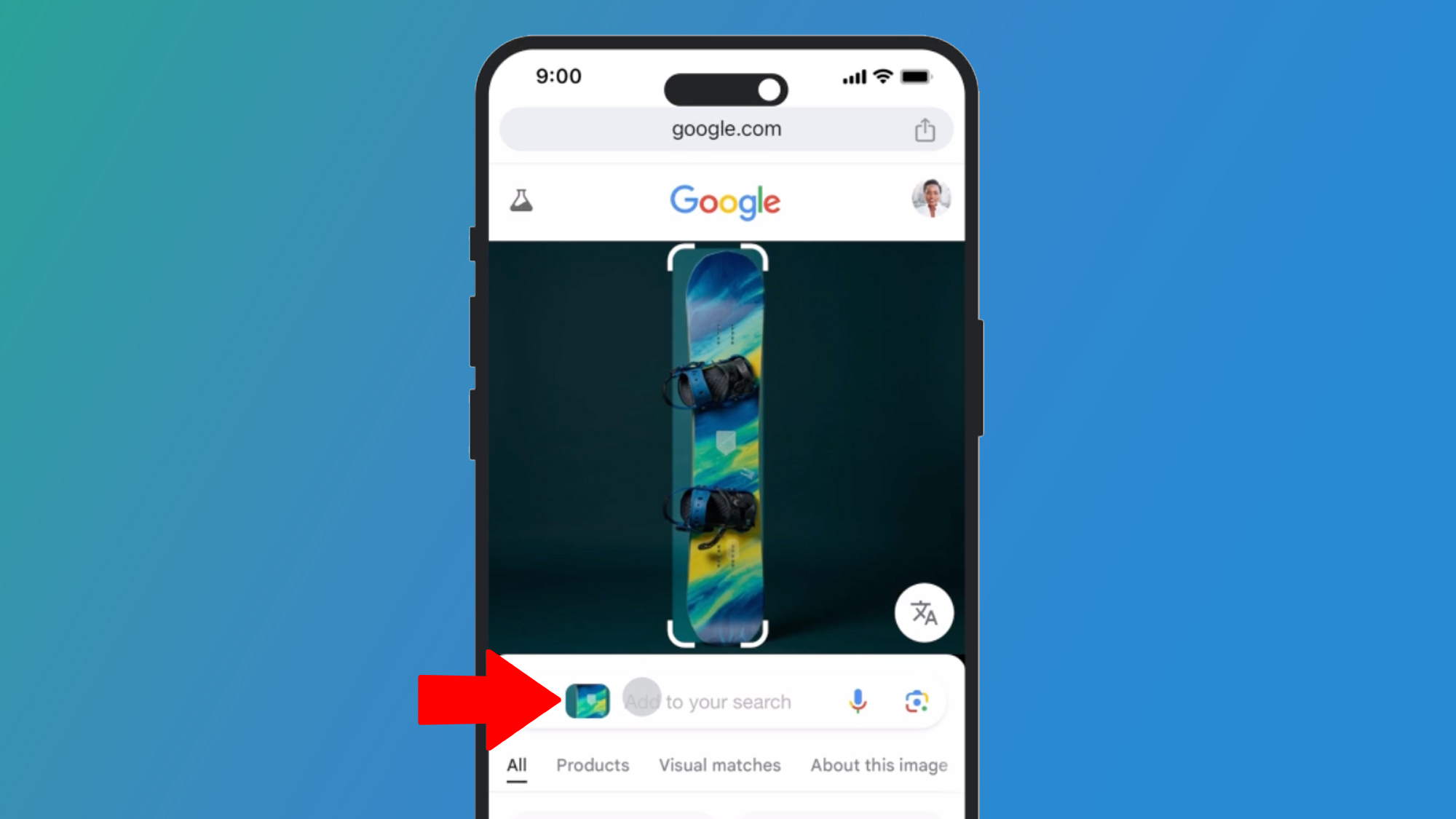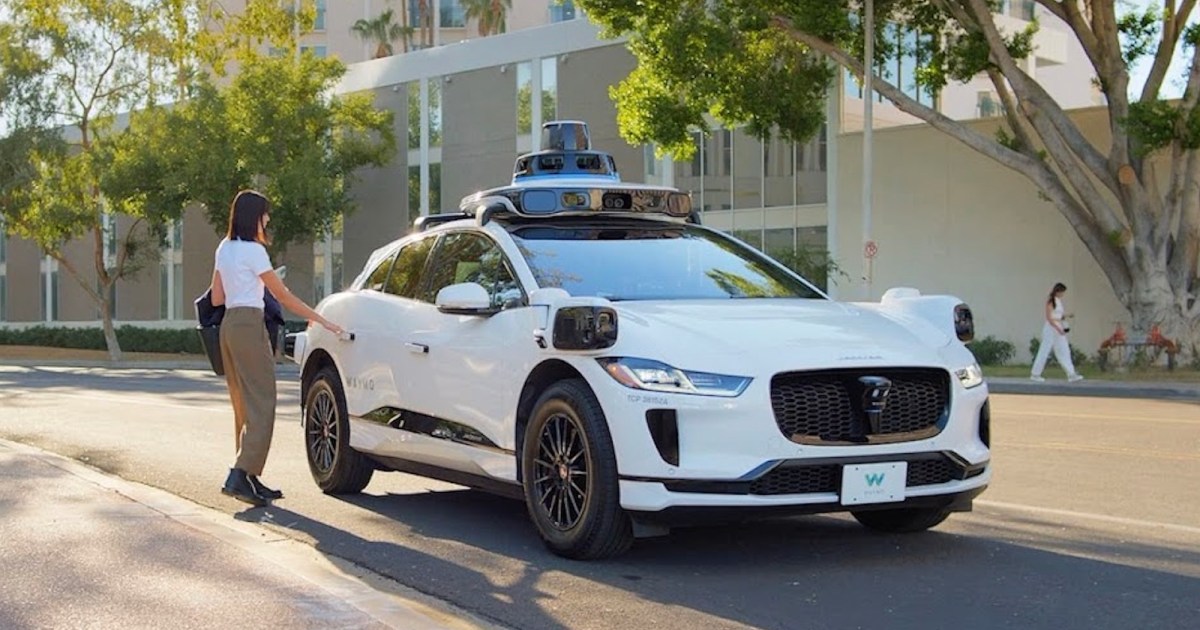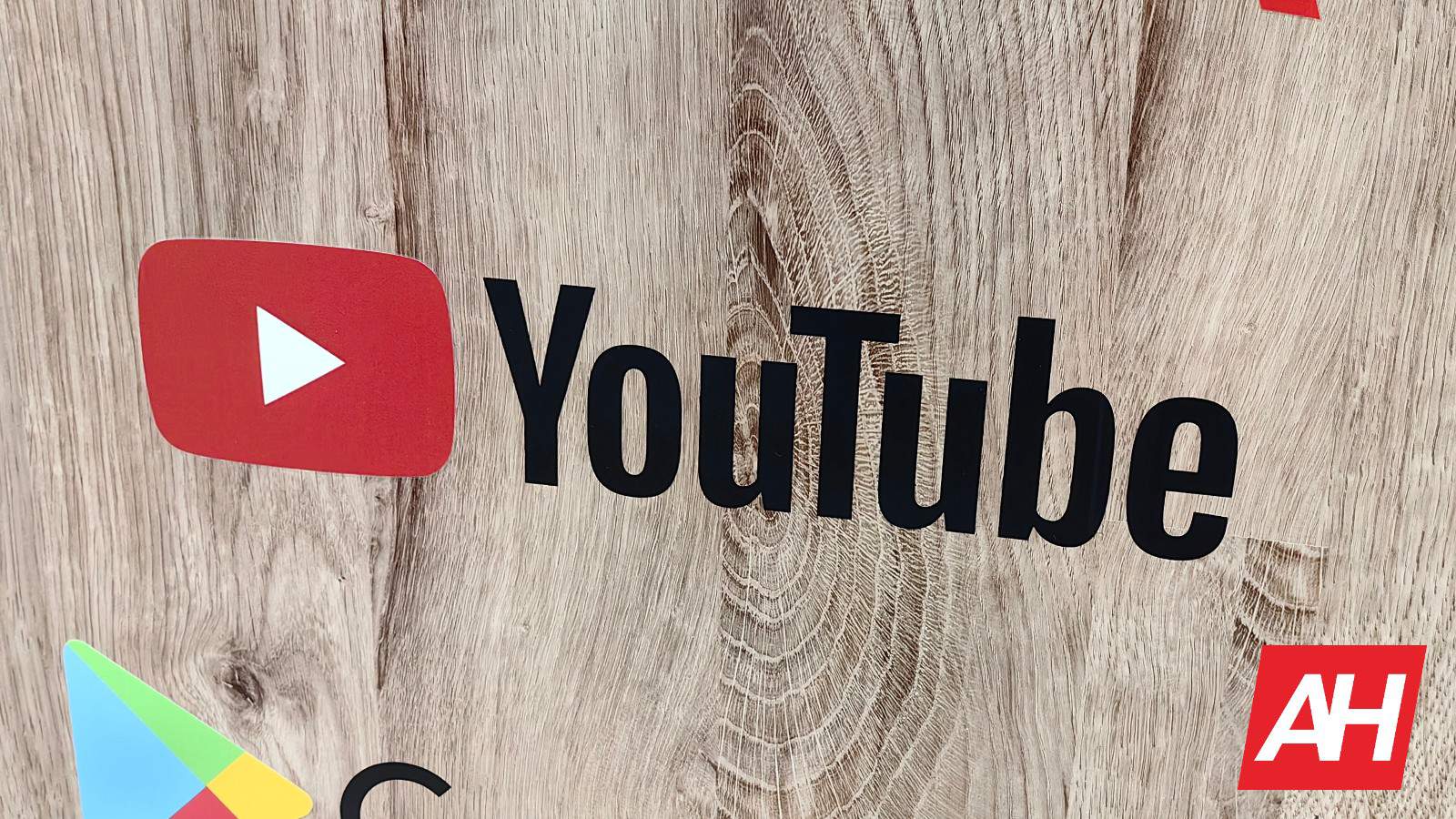At the risk of stating the obvious, AI is absolutely everywhere lately. There’s AI in your car, AI in your messaging app, AI in your glasses. I’ve gotten pretty desensitized to it all as a hazard of the job, but it was Spotify’s AI DJ that actually got my attention.
Technology
Spotify’s AI is no match for a real DJ

I’ve listened to a top 40 radio station in the past two decades, so I’m familiar with the concept of a robot picking music for me. In that context, an AI DJ doesn’t seem like much of a stretch. But after using it on and off for a week, I’m convinced it’s the perfect analogy for our AI-everything moment. It’s eerily human, and it plays a lot of music I like. But take it from someone with access to a high-quality local indie radio station — one that employs human DJs! — there just ain’t nothing like the real thing.
Spotify’s AI DJ has been around since early 2023, but it piqued my interest recently when I was scrounging around the app looking for some work-friendly tunes. The AI voice greeted me by name, then after a little preamble, told me it had some “dream pop and neo-psychedelic waves” picked out. As the music started, I was annoyed at how extremely my shit it was. I shouldn’t have been surprised, considering that Spotify has nearly a decade’s worth of data on my musical listening habits. It drew on my previous listening for the next track, too: a song by Classixx, whose Hanging Gardens album I listened to on repeat last year. But while I listened to Hanging Gardens on Spotify, I didn’t discover it there. I heard it first on KEXP — a local station where real humans pick the music.
See, here in Seattle, we’re extremely spoiled. In between the robot-programmed, conglomerate-owned stations, we have a real honest-to-god independent station on our radio dials: 90.3, to be precise. I started listening to KEXP through their online stream years before I moved to Seattle. Being a local has only made me more of a fan; I celebrated the opening of the “new” KEXP location in 2016 and saw one of my favorite bands play a free in-studio show there not long before they broke up. I’ve logged countless hours working on my laptop in the community gathering space. Being able to walk into my favorite radio station and just like, hang out, remains cool as hell all these years later. I wish every city in the country had a KEXP.
It’s not that I like everything that I hear on KEXP. “The Friday song” is banned in my house because my husband and I are both so sick of it. And as much as I’ve tried, I can’t get into Wet Leg. It’s a me problem. But that’s kind of the point of a radio station, isn’t it? You hear some stuff you like and some stuff you’re not as into. Maybe you hear a song you forgot about but love or a band you dig that you’ve never heard before. It’s a well-rounded meal, while an AI-curated set feels like a dessert buffet. It’s all the stuff you love, and it’s great at first, but then it gives you a stomach ache after a while.
It hits different than when it comes from an algorithm
In the era of Spotify algorithms and top 40 stations, a DJ might seem like an abstract concept. But KEXP’s DJs are very much real people that I see out in the community, emceeing local music festivals and shopping at the co-op grocery store. It’s an obvious but crucial difference. When a real human plays a song you really like because they really like it, too, it hits different than when it comes from an algorithm.
Being on air and sharing music is “a way of connection with thousands of people across the world,” says Evie Stokes, DJ and host of KEXP’s Drive Time. “It’s a great way for me to be honest and have accountability and community that I think we so desperately need.”
Her connection to the audience is built through and alongside the music; Stokes has shared her journey into sobriety with her listeners. “Every time I talk about it on air… I get an influx of messages from folks who are going through similar paths in their life.” That connection simply can’t exist when the only thing running the station is a robot.
One of the downsides of being employed as a writer is that it’s basically impossible for me to listen to the radio while I work. I can’t write to songs with lyrics, and I definitely can’t write while a DJ is talking. So I turn to Spotify a lot during the workday, and I’ve listened to plenty of “lofi” and “smooth jazz beats” playlists while blogging. I’ve used another of Spotify’s AI features, too: AI-created playlists. For the purpose, they’re fine. Best of all, there’s no pretense that a human is picking the music for me. I tell the computer what mood I’m in, and it assembles a playlist of tunes that fit the assignment.
If nothing else, the AI DJ is a kind of totem of the particular AI moment we’re in. Generative AI is buzzy, and tech companies are busy shoving it into every corner of every product they make, whether it has any business being there or not. There’s plenty of stuff AI can do and probably will do for us in the near future. But standing in for a real human, especially in creative applications, isn’t one of them. Take it from the Polish radio station that tried — and failed spectacularly — to replace its human presenters with AI characters.
A podcast is just humans talking to each other
Does anyone actually want an AI DJ calling them by name? Does anybody want an AI-generated DM from their favorite creator? Does anyone want to have a Zoom meeting with your AI avatar? Maybe, but I think the tech executives pushing for more of this stuff are vastly overestimating this demand and underestimating the value that a real human brings to an exchange. People want to listen to podcasts, for Christ’s sake. A podcast is just humans talking to each other. Conceptually, listening to a podcast is about as advanced as gathering round the radio for your favorite program like people did a hundred years ago. Some things are constants.
On the day I started listening to the Spotify AI DJ, I got in the car that afternoon to pick my kid up from daycare. DJ Riz was hosting Drive Time on KEXP, and the first thing I heard him play was “Sunshine, Lollipops and Rainbows” by Lesley Gore, released in 1963. It’s a bop that’s as syrupy-sweet as the candy in its title. Riz followed that up with Love from Mos Def’s 1999 album Black on Both Sides. I’m sure I wouldn’t have listened to either of those songs on my own that afternoon, let alone back to back. But it worked, and the juxtaposition made me smile. You just don’t get that kind of thing from AI.
Technology
Swiggy market debut fuels India’s food, quick commerce wars

Shares of Swiggy dropped 4% to 401 rupees on Wednesday as the food delivery and quick commerce startup concluded India’s second-largest IPO this year, in a closely watched debut that puts it in direct comparison with what analysts have long considered the benchmark Indian internet stock: Zomato.
The listing of the 10-year-old Bengaluru-headquartered firm marks a milestone for India’s startup ecosystem, where several firms are eyeing similarly large public offerings in the next 24 months. It also delivers a major liquidity event for Swiggy’s backers, including Prosus, whose paper returns have already reached $2 billion, as well as SoftBank and Accel. Some 5,000 employees stand to collectively reap about $1 billion in wealth.
In the run-up to the IPO, Swiggy set its valuation at $11.3 billion, a notably conservative figure given rival Zomato’s recent $29 billion market capitalization. In an interview, Swiggy co-founder and chief executive Sriharsha Majety said the firm wanted to make the offering exciting for new investors. Shares of Zomato is also down 8% this month as foreign institutional investors continue to sell billions in Indian shares.
“One of the things I am most excited about is that Swiggy itself is happening at an incredible time,” he said in a speech Wednesday. “When we look at the next one to two decades, I think it’s India’s next two decades. There’s so much economic growth in front of us. The Indian pride is at an all-time high.”
Swiggy enters public markets at a pivotal moment in India’s digital commerce landscape. While it has established itself as India’s second-largest food delivery platform with 14 million monthly active users, it trails market leader Zomato across key metrics. Its annualized gross order value of $3.3 billion in food delivery lags about 25% behind Zomato’s, according to Macquarie research.
The gap widens further in quick commerce – the rapid delivery segment promising grocery deliveries in 10 minutes. Swiggy’s Instamart service, operating through a network of over 550 dark stores, has 5.2 million monthly users compared to 7.6 million for Zomato’s Blinkit. More concerning for potential investors is that while Blinkit has reached adjusted EBITDA breakeven, Instamart remains loss-making even at the contribution margin level.
“We believe each of Swiggy’s business segments deserve to get lower target valuation multiple compared to that of Zomato’s due to poor execution in the past, which has led to widening of the market share gap,” JMFinancial analysts said Wednesday.
Yet the opportunity ahead is substantial. Morgan Stanley estimates India’s quick commerce market could reach $42 billion by 2030, representing over 18% of the country’s total ecommerce market. The sector has already grown at a blistering 77% annually since its pandemic-era inception, far outpacing traditional retail’s 14% growth.
JPMorgan reports that quick commerce platforms have already captured 56% of online grocery delivery from traditional e-commerce players.
However, competitive pressures are intensifying. Traditional retail giants like Flipkart and Reliance’s JioMart are launching their own rapid delivery services. Questions persist about the viability of the quick-commerce model beyond major urban centers, given its reliance on dense networks of small warehouses.
Technology
Trump says Elon Musk will lead ‘DOGE’ office to cut ‘wasteful’ government spending

I am pleased to announce that the Great Elon Musk, working in conjunction with American Patriot Vivek Ramaswamy, will lead the Department of Government Efficiency (“DOGE”). Together, these two wonderful Americans will pave the way for my Administration to dismantle Government Bureaucracy, slash excess regulations, cut wasteful expenditures, and restructure Federal Agencies – Essential to the “Save America” Movement. “This will send shockwaves through the system, and anyone involved in Government waste, which is a lot of people!” stated Mr. Musk.
It will become, potentially, “The Manhattan Project” of our time. Republican politicians have dreamed about the objectives of “DOGE” for a very long time. To drive this kind of drastic change, the Department of Government Efficiency will provide advice and guidance from outside of Government, and will partner with the White House and Office of Management & Budget to drive large scale structural reform, and create an entrepreneurial approach to Government never seen before.
I look forward to Elon and Vivek making changes to the Federal Bureaucracy with an eye on efficiency and, at the same time, making life better for all Americans. Importantly, we will drive out the massive waste and fraud which exists throughout our annual $6.5 Trillion Dollars of Government Spending. They will work together to liberate our Economy, and make the U.S. Government accountable to “WE THE PEOPLE.” Their work will conclude no later than July 4, 2026 – A smaller Government, with more efficiency and less bureaucracy, will be the perfect gift to America on the 250th Anniversary of The Declaration of Independence. I am confident they will succeed!
Technology
Google rolls out 4 useful upgrades for Google Chrome on iOS

- Improvements are rolling out now for Chrome for iOS
- Google Lens gets improved searches
- Tighter integrations with other Google apps
If you’re using Google Chrome on your iPhone, you’ll be interested in the four upgrades that have just been announced. They’re improving Google Lens search, online shopping, and integrations with Google Drive, Google Photos, and Google Maps.
First, as outlined in the official Google blog post, we’ve got an upgrade for Google Lens. You can already run Google Lens searches inside Chrome for iOS using a photo from the camera or your gallery – just tap the search box, then the Google Lens icon – and the new update lets you refine those searches with extra text.
So you could, for example, type out a color to narrow down the search results if you’re looking at a photo of a sweatshirt. Or maybe you have a photo of a place on the screen and want to add some text asking where in the world it is.
Second, there’s a new feature called Shopping Insights, which is only for US users now. If you’re looking at a product in Chrome that Google knows is available online at a discount, you’ll see a “good deal now” notification in the address bar – a little blue and white icon. Tap the icon to see the product’s price history over time.
Keeping it Google

The other changes here improve the integration between Chrome for iOS and other Google services. You can now save files and photos to Google Drive or Google Photos, so they don’t have to take up space on your iPhone – just tap the Google Drive option when saving a file, or long-press an image and pick Google Photos on the pop-up.
Then there’s Google Maps: Chrome for iOS could already bring up a map pop-up without actually opening Google Maps, but the process has now been streamlined and only needs a single tap. Chrome will automatically spot and underline addresses on the web.
Like Shopping Insights, the Google Maps update will not be available everywhere right away. Google says both of these features will expand to more regions over time, so keep an eye out for them. Make sure you update Chrome for iOS to the latest version to get everything as soon as possible.
It’s worth bearing in mind that all these features, or very similar features, are already available in Chrome for Android – so if you’re on a phone running Google’s mobile operating system, you’re not missing out.
You Might Also Like
Technology
Now anyone in LA can take Waymo robotaxi rides 24/7


It just got much easier to take a robotaxi ride in Los Angeles. Waymo announced on Tuesday that anyone in the Californian city can now take fully autonomous rides, removing the need to join a wait list.
Alphabet-owned Waymo started offering paid robotaxi rides in Los Angeles earlier this year via its Waymo One app, but strong demand resulted in a waitlist of nearly 300,000 people to join the service.
But now anyone can download the app and book a ride using self-driving Waymo car.
“Now is an exciting time to welcome everyone in Los Angeles along for the ride,” Tekedra Mawakana, co-CEO, Waymo, said in a post on Waymo’s website. “Our service has matured quickly and our riders are embracing the many benefits of fully autonomous driving.”
Waymo riders can now criss-cross nearly 80 square miles of LA County, with the company planning to expand its service area over time to cover more of the city.
To date, driverless Waymo cars have taken care of hundreds of thousands of paid trips throughout the city, with riders rating the experience at 4.7/5 on average. Also, a recent survey by Waymo of Los Angeles riders found that 98% were satisfied with the service.
But it hasn’t all been smooth sailing for the company in recent months. Earlier this year, the U.S. government’s highway safety agency launched an investigation into crashes and alleged traffic violations involving Waymo’s autonomous cars, which besides Los Angeles also operate in San Francisco and Phoenix. And there was also the recent case of Waymo cars keeping residents awake at night as they honked their horns incessantly for no apparent reason. Waymo has since implemented a fix.
Science & Environment
Oil could plunge to $40 in 2025 if OPEC unwinds voluntary production cuts, analysts say

A pump jack in Midland, Texas, US, on Thursday, Oct. 3, 2024.
Anthony Prieto | Bloomberg | Getty Images
Oil prices may see a drastic fall in the event that oil alliance OPEC+ unwinds its existing output cuts, said market watchers who are predicting a bearish year ahead for crude.
“There is more fear about 2025’s oil prices than there has been since years — any year I can remember, since the Arab Spring,” said Tom Kloza, global head of energy analysis at OPIS, an oil price reporting agency.
“You could get down to $30 or $40 a barrel if OPEC unwound and didn’t have any kind of real agreement to rein in production. They’ve seen their market share really dwindle through the years,” Kloza added.
A decline to $40 a barrel would mean around a 40% erasure of current crude prices. Global benchmark Brent is currently trading at $72 a barrel, while U.S. West Texas Intermediate futures are around $68 per barrel.

Oil prices year-to-date
Given that oil demand growth next year probably won’t be much more than 1 million barrels a day, a full unwinding of OPEC+ supply cuts in 2025 would “undoubtedly see a very steep slide in crude prices, possibly toward $40 a barrel,” Henning Gloystein, head of energy, climate and resources at Eurasia Group, told CNBC.
Similarly, MST Marquee’s senior energy analyst Saul Kavonic posited that should OPEC+ unwind cuts without regard to demand, it would “effectively amount to a price war over market share that could send oil to lows not seen since Covid.”
However, the alliance is more likely to opt for a gradual unwinding early next year, compared to a full scale and immediate one, the analysts said.
Should the producers group proceed with their production plan, the market surplus could nearly double.
Martoccia Francesco
Energy strategist at Citi
The oil cartel has been exercising discipline in maintaining its voluntary output cuts, to the point of extending them.
In September, OPEC+ postponed plans to begin gradually rolling back on the 2.2 million barrels per day of voluntary cuts by two months in an effort to stem the slide of oil prices. The 2.2 million bpd cut, which was implemented over the second and third quarters, had been due to expire at the end of September.
At the start of this month, the oil cartel again decided to delay the planned oil output increase by another month to the end of December.
Oil prices have been weighed by a sluggish post-Covid recovery in demand from China, the world’s second-largest economy and leading crude oil importer. In its monthly report released Tuesday, OPEC lowered its 2025 global oil demand growth forecast from 1.6 million barrels per day to 1.5 million barrels per day.
The pressured prices were also conflagrated by a perceivably oversupplied market, especially as key oil producers outside the OPEC alliance like the U.S., Canada, Guyana and Brazil are also planning to add supply, Gloystein highlighted.
Bearish year ahead for oil
The market consensus is that there’ll be a “substantial” oil stock build next year, said Citibank energy strategist Martoccia Francesco.
“Should the producers group proceed with their production plan, the market surplus could nearly double… reaching as much as 1.6 million barrels per day,” said Francesco.
Even if OPEC+ doesn’t unwind the cuts, the future ofl prices is still looking break. Citi analysts expect Brent price to average $60 per barrel next year.
Further fueling the bearish outlook is the incoming administration of U.S. President-elect Donald Trump, whose return is associated by some with a potential trade war, said analysts who spoke to CNBC.
“If we do get a trade war — and a lot of economists think that a trade war is possible, and particularly against China — we could see much, much lower prices,” said OPIS’ Kloza.
Trump has also touted a “drill baby drill” policy for U.S. producers, vowing to cut energy prices in half.
For that to happen to retail gasoline prices, oil would need to drop to “below $40” per barrel, said Matt Smith, Kpler’s lead oil analyst.
Right now, retail gasoline prices are at a “sweet spot” at $3 per gallon, where consumers do not feel the pinch and input prices are still sufficiently high for producers, Smith added.
Technology
YouTube testing AI Music Remixes with some creators

YouTube is testing a new “AI Music Remixes” feature. As the name indicates, the feature will allow some creators to use AI for restyling licensed songs. Participants would be able to create short, modified audio clips.
YouTube testing multiple AI features on its platform
YouTube has been actively exploring the power of Artificial Intelligence (AI). The largest crowd-sourced video-sharing platform recently changed the gesture navigation on its mobile app. Instead of exiting the app or video when swiping, the now simply starts playing the next video that YouTube AI has recommended.
YouTube Premium subscribers using Android devices for YouTube also gained the ability to use conversational AI to search for videos. Google’s Gemini Gen AI can control YouTube Music playback.
YouTube is now moving beyond viewers, and offering Gen AI to creators for modifying licensed music. What’s even more surprising is that the platform has managed to get a few popular songwriters and singers on board.
How does the AI Music Remixes feature work in YouTube Studio?
YouTube has confirmed it is testing “AI Music Remixes.” The feature lets some YouTubers use AI to “restyle” licensed songs.
Also called the “Dream Track experiment“, the feature allows some creators to make or modify songs using the AI-generated voices of artists. It is important to note that YouTube has restricted the feature to a select few participants.
Currently, the AI Music Remixes features reportedly include voices of artists such as Charlie Puth, Charli XCX, Demi Lovato, and John Legend. It is possible the platform could tie up with more artists and companies in the future.
YouTube hasn’t yet confirmed which songs or even how many songs are available to be modified using AI. Although the names of music labels haven’t been announced, YouTube will allow its AI to generate a 30-second audio clip. Creators would be able to alter the mood or genre of the remixed audio clip.
YouTube has confirmed that the restyled soundtracks will have clear attribution to the original song. As the remixed song would be available for YouTube Shorts, the Shorts audio pivot page will indicate that the track was restyled with AI.
-

 Science & Environment2 months ago
Science & Environment2 months agoHow to unsnarl a tangle of threads, according to physics
-

 Technology2 months ago
Technology2 months agoWould-be reality TV contestants ‘not looking real’
-

 Technology2 months ago
Technology2 months agoIs sharing your smartphone PIN part of a healthy relationship?
-

 Science & Environment2 months ago
Science & Environment2 months agoHyperelastic gel is one of the stretchiest materials known to science
-

 Science & Environment2 months ago
Science & Environment2 months ago‘Running of the bulls’ festival crowds move like charged particles
-

 Science & Environment2 months ago
Science & Environment2 months agoX-rays reveal half-billion-year-old insect ancestor
-

 Science & Environment2 months ago
Science & Environment2 months agoPhysicists have worked out how to melt any material
-

 MMA1 month ago
MMA1 month ago‘Dirt decision’: Conor McGregor, pros react to Jose Aldo’s razor-thin loss at UFC 307
-

 News1 month ago
News1 month ago‘Blacks for Trump’ and Pennsylvania progressives play for undecided voters
-

 Money1 month ago
Money1 month agoWetherspoons issues update on closures – see the full list of five still at risk and 26 gone for good
-

 Sport1 month ago
Sport1 month agoAaron Ramsdale: Southampton goalkeeper left Arsenal for more game time
-

 News1 month ago
News1 month agoWoman who died of cancer ‘was misdiagnosed on phone call with GP’
-

 Football1 month ago
Football1 month agoRangers & Celtic ready for first SWPL derby showdown
-
Business1 month ago
how UniCredit built its Commerzbank stake
-

 Sport1 month ago
Sport1 month ago2024 ICC Women’s T20 World Cup: Pakistan beat Sri Lanka
-

 Technology1 month ago
Technology1 month agoUkraine is using AI to manage the removal of Russian landmines
-

 Science & Environment2 months ago
Science & Environment2 months agoMaxwell’s demon charges quantum batteries inside of a quantum computer
-

 Science & Environment2 months ago
Science & Environment2 months agoSunlight-trapping device can generate temperatures over 1000°C
-

 Science & Environment2 months ago
Science & Environment2 months agoA new kind of experiment at the Large Hadron Collider could unravel quantum reality
-

 Science & Environment2 months ago
Science & Environment2 months agoLiquid crystals could improve quantum communication devices
-

 Technology1 month ago
Technology1 month agoSamsung Passkeys will work with Samsung’s smart home devices
-

 Science & Environment2 months ago
Science & Environment2 months agoLaser helps turn an electron into a coil of mass and charge
-

 Science & Environment2 months ago
Science & Environment2 months agoQuantum forces used to automatically assemble tiny device
-
Business1 month ago
Top shale boss says US ‘unusually vulnerable’ to Middle East oil shock
-

 News1 month ago
News1 month agoMassive blasts in Beirut after renewed Israeli air strikes
-

 Science & Environment2 months ago
Science & Environment2 months agoWhy this is a golden age for life to thrive across the universe
-

 Technology2 months ago
Technology2 months agoRussia is building ground-based kamikaze robots out of old hoverboards
-

 Technology1 month ago
Technology1 month agoGmail gets redesigned summary cards with more data & features
-

 MMA1 month ago
MMA1 month agoPereira vs. Rountree prediction: Champ chases legend status
-

 Science & Environment2 months ago
Science & Environment2 months agoQuantum ‘supersolid’ matter stirred using magnets
-

 News1 month ago
News1 month agoCornell is about to deport a student over Palestine activism
-

 News1 month ago
News1 month agoNavigating the News Void: Opportunities for Revitalization
-

 Technology1 month ago
Technology1 month agoSingleStore’s BryteFlow acquisition targets data integration
-

 Sport1 month ago
Sport1 month agoBoxing: World champion Nick Ball set for Liverpool homecoming against Ronny Rios
-

 Entertainment1 month ago
Entertainment1 month agoBruce Springsteen endorses Harris, calls Trump “most dangerous candidate for president in my lifetime”
-

 Technology1 month ago
Technology1 month agoEpic Games CEO Tim Sweeney renews blast at ‘gatekeeper’ platform owners
-

 Business1 month ago
Business1 month agoWater companies ‘failing to address customers’ concerns’
-

 MMA1 month ago
MMA1 month agoDana White’s Contender Series 74 recap, analysis, winner grades
-

 MMA1 month ago
MMA1 month agoPennington vs. Peña pick: Can ex-champ recapture title?
-

 Sport1 month ago
Sport1 month agoShanghai Masters: Jannik Sinner and Carlos Alcaraz win openers
-

 Technology2 months ago
Technology2 months agoMeta has a major opportunity to win the AI hardware race
-

 Technology1 month ago
Technology1 month agoMicrophone made of atom-thick graphene could be used in smartphones
-

 Money1 month ago
Money1 month agoTiny clue on edge of £1 coin that makes it worth 2500 times its face value – do you have one lurking in your change?
-

 Science & Environment2 months ago
Science & Environment2 months agoITER: Is the world’s biggest fusion experiment dead after new delay to 2035?
-

 Technology1 month ago
Technology1 month agoMicrosoft just dropped Drasi, and it could change how we handle big data
-

 MMA1 month ago
MMA1 month agoKayla Harrison gets involved in nasty war of words with Julianna Pena and Ketlen Vieira
-

 Sport1 month ago
Sport1 month agoWXV1: Canada 21-8 Ireland – Hosts make it two wins from two
-

 MMA1 month ago
MMA1 month ago‘Uncrowned queen’ Kayla Harrison tastes blood, wants UFC title run
-

 Sport1 month ago
Sport1 month agoAmerica’s Cup: Great Britain qualify for first time since 1964
-

 Football1 month ago
Football1 month ago'Rangers outclassed and outplayed as Hearts stop rot'
-

 Technology1 month ago
Technology1 month agoLG C4 OLED smart TVs hit record-low prices ahead of Prime Day
-

 News1 month ago
News1 month agoHarry vs Sun publisher: ‘Two obdurate but well-resourced armies’
-

 News2 months ago
News2 months ago▶️ Hamas in the West Bank: Rising Support and Deadly Attacks You Might Not Know About
-

 Technology2 months ago
Technology2 months agoWhy Machines Learn: A clever primer makes sense of what makes AI possible
-

 Technology1 month ago
Technology1 month agoUniversity examiners fail to spot ChatGPT answers in real-world test
-

 News1 month ago
News1 month agoRwanda restricts funeral sizes following outbreak
-

 Technology1 month ago
Technology1 month agoCheck, Remote, and Gusto discuss the future of work at Disrupt 2024
-

 Sport1 month ago
Sport1 month agoURC: Munster 23-0 Ospreys – hosts enjoy second win of season
-
Travel1 month ago
World of Hyatt welcomes iconic lifestyle brand in latest partnership
-

 TV1 month ago
TV1 month agoসারাদেশে দিনব্যাপী বৃষ্টির পূর্বাভাস; সমুদ্রবন্দরে ৩ নম্বর সংকেত | Weather Today | Jamuna TV
-

 Business1 month ago
Business1 month agoWhen to tip and when not to tip
-

 News1 month ago
News1 month agoHull KR 10-8 Warrington Wolves – Robins reach first Super League Grand Final
-

 Sport1 month ago
Sport1 month agoNew Zealand v England in WXV: Black Ferns not ‘invincible’ before game
-

 MMA1 month ago
MMA1 month agoHow to watch Salt Lake City title fights, lineup, odds, more
-
Business1 month ago
Italy seeks to raise more windfall taxes from companies
-
Politics1 month ago
‘The night of the living dead’: denial-fuelled Tory conference ends without direction | Conservative conference
-

 Science & Environment2 months ago
Science & Environment2 months agoNerve fibres in the brain could generate quantum entanglement
-

 Science & Environment2 months ago
Science & Environment2 months agoNuclear fusion experiment overcomes two key operating hurdles
-

 Science & Environment2 months ago
Science & Environment2 months agoA slight curve helps rocks make the biggest splash
-

 Sport1 month ago
Sport1 month agoPremiership Women’s Rugby: Exeter Chiefs boss unhappy with WXV clash
-

 Sport1 month ago
Sport1 month agoFans say ‘Moyes is joking, right?’ after his bizarre interview about under-fire Man Utd manager Erik ten Hag goes viral
-

 Technology1 month ago
Technology1 month agoNintendo’s latest hardware is not the Switch 2
-

 Science & Environment2 months ago
Science & Environment2 months agoA tale of two mysteries: ghostly neutrinos and the proton decay puzzle
-

 Money1 month ago
Money1 month agoThe four errors that can stop you getting £300 winter fuel payment as 880,000 miss out – how to avoid them
-
Business1 month ago
The search for Japan’s ‘lost’ art
-

 Sport1 month ago
Sport1 month agoSnooker star Shaun Murphy now hits out at Kyren Wilson after war of words with Mark Allen
-
Business1 month ago
It feels nothing like ‘fine dining’, but Copenhagen’s Kadeau is a true gift
-

 TV1 month ago
TV1 month agoTV Patrol Express September 26, 2024
-

 Football1 month ago
Football1 month agoFifa to investigate alleged rule breaches by Israel Football Association
-

 News1 month ago
News1 month ago▶ Hamas Spent $1B on Tunnels Instead of Investing in a Future for Gaza’s People
-

 Sport1 month ago
Sport1 month agoHow India became a Test cricket powerhouse
-

 Technology1 month ago
Technology1 month agoMusk faces SEC questions over X takeover
-

 MMA1 month ago
MMA1 month agoStephen Thompson expects Joaquin Buckley to wrestle him at UFC 307
-

 Football1 month ago
Football1 month agoWhy does Prince William support Aston Villa?
-

 News2 months ago
News2 months ago▶️ Media Bias: How They Spin Attack on Hezbollah and Ignore the Reality
-

 Womens Workouts2 months ago
Womens Workouts2 months ago3 Day Full Body Women’s Dumbbell Only Workout
-

 News1 month ago
News1 month agoCrisis in Congo and Capsizing Boats Mediterranean
-
Business1 month ago
Bank of England warns of ‘future stress’ from hedge fund bets against US Treasuries
-

 News1 month ago
News1 month agoUK forces involved in response to Iran attacks on Israel
-

 Sport1 month ago
Sport1 month agoChina Open: Carlos Alcaraz recovers to beat Jannik Sinner in dramatic final
-

 Sport1 month ago
Sport1 month agoSturm Graz: How Austrians ended Red Bull’s title dominance
-

 Sport1 month ago
Sport1 month agoBukayo Saka left looking ‘so helpless’ in bizarre moment Conor McGregor tries UFC moves on Arsenal star
-

 Sport1 month ago
Sport1 month agoCoco Gauff stages superb comeback to reach China Open final
-

 Technology1 month ago
Technology1 month agoSamsung Galaxy Tab S10 won’t get monthly security updates
-

 Technology1 month ago
Technology1 month agoJ.B. Hunt and UP.Labs launch venture lab to build logistics startups
-

 Money1 month ago
Money1 month agoDWP reveals exact date that cold weather payments will start this winter – can you get free cash for your energy bills?
-

 MMA1 month ago
MMA1 month ago‘I was fighting on automatic pilot’ at UFC 306
-

 Sport1 month ago
Sport1 month agoPhil Jones: ‘I had to strip everything back – now management is my focus’
-

 Technology1 month ago
Technology1 month agoQuoroom acquires Investory to scale up its capital-raising platform for startups
-

 News1 month ago
News1 month agoGerman Car Company Declares Bankruptcy – 200 Employees Lose Their Jobs

You must be logged in to post a comment Login